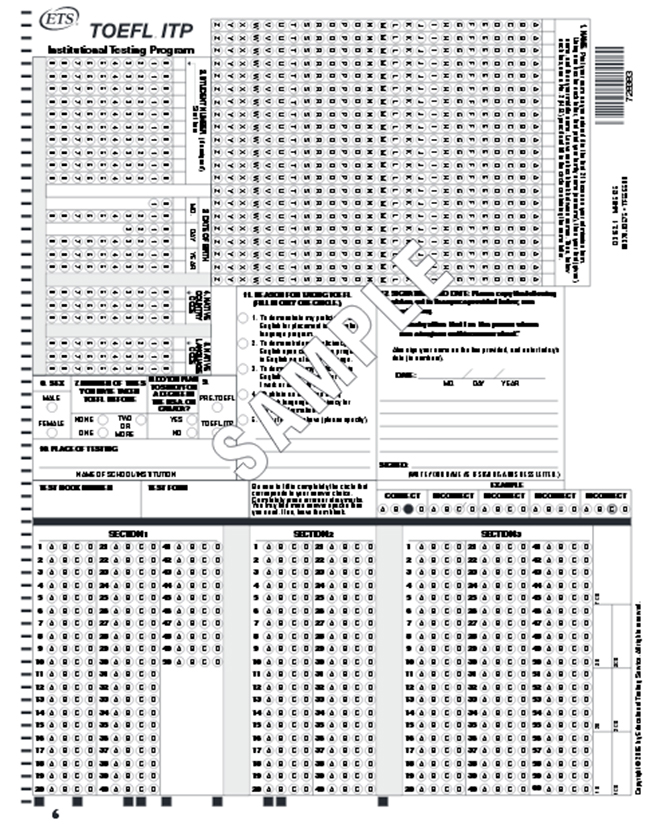
TOEFL is delivered in several formats. One of them is the paper-based test (TOEFL PBT). It is used for the TOEFL Institutional Testing Programme (ITP). TOELF ITP is often used by various institutions to test language skills for admission to academic programmes or scholarship competitions.
The first challenge on the TOEFL PBT Answer Sheet
It may seem like a joke, but what follows is actually true. I have witnessed it many times when administering the Institutional TOEFL test, which is a paper-based version of TOEFL. The biggest challenge for most of the examinees is to fill out the identification part of the TOEFL PBT Answer Sheet. This is done in the test centre, but before the actual test begins and is the first trap in the TOEFL test.
The TOEFL PBT / ITP Answer Sheet
Basically, the Answer Sheet is a grid of boxes and ovals and twelve sections of information which the test takers must complete in limited time under standardised instructions of the test administrator. The information required is simple – the test takers’ name, date of birth, sex, country, etc. So, why is this part so challenging?

The first five traps on the TOEFL
There are five traps on the TOEFL PBT Answer Sheet which usually distract and embarrass many test-takers at the start of the test.
- Most of the test takers have never seen a grid like this before and it takes time to get used to it and work through the sections quickly enough. If you take the time to familiarise yourself with the Answer Sheet in advance, this will save a stressful start to the test.
- The TOEFL PBT Answer Sheet has to be turned clockwise after section five, so that you can continue working on it. This creates an additional distraction to test takers who are not used to this format.
- In addition to writing in block letters in the boxes provided, test takers need to fill in ovals for each letter or number below each box. This is very rare. So completing section one with your last name, first name and middle name initial actually takes quite some time and you will be under pressure not to make a mistake. If you fill in a wrong oval, then you need to erase your mark completely to avoid incorrect scanning of your Answer Sheet.
- Some sections require codes which test takers need to have checked in advance – for example ‘Native Country’ or ‘Native Language’.
- And last, but not least, is the challenge in section 12 which requires that the examinee copy a statement and sign it. Basically, this means that you have to rewrite a text in your own handwriting, not using block letters, and to sign below the statement as if you were signing an official document. This is a situation which many test takers face for the first time, so they are quite uncertain about what to do.
The real test
So finally, after you have overcome the first challenge – filling in the Identification part of the Answer Sheet, the real test will begin with the Listening Comprehension section! It is important to get to know the Answer Sheet in advance in order to avoid stress at the start of the test. For many test-takers this will be their first international standardised test in English and they will be stressed anyway. So if you can complete the Answer Sheet smoothly, this will give you more confidence during the actual test.
Good luck to all.

Comments